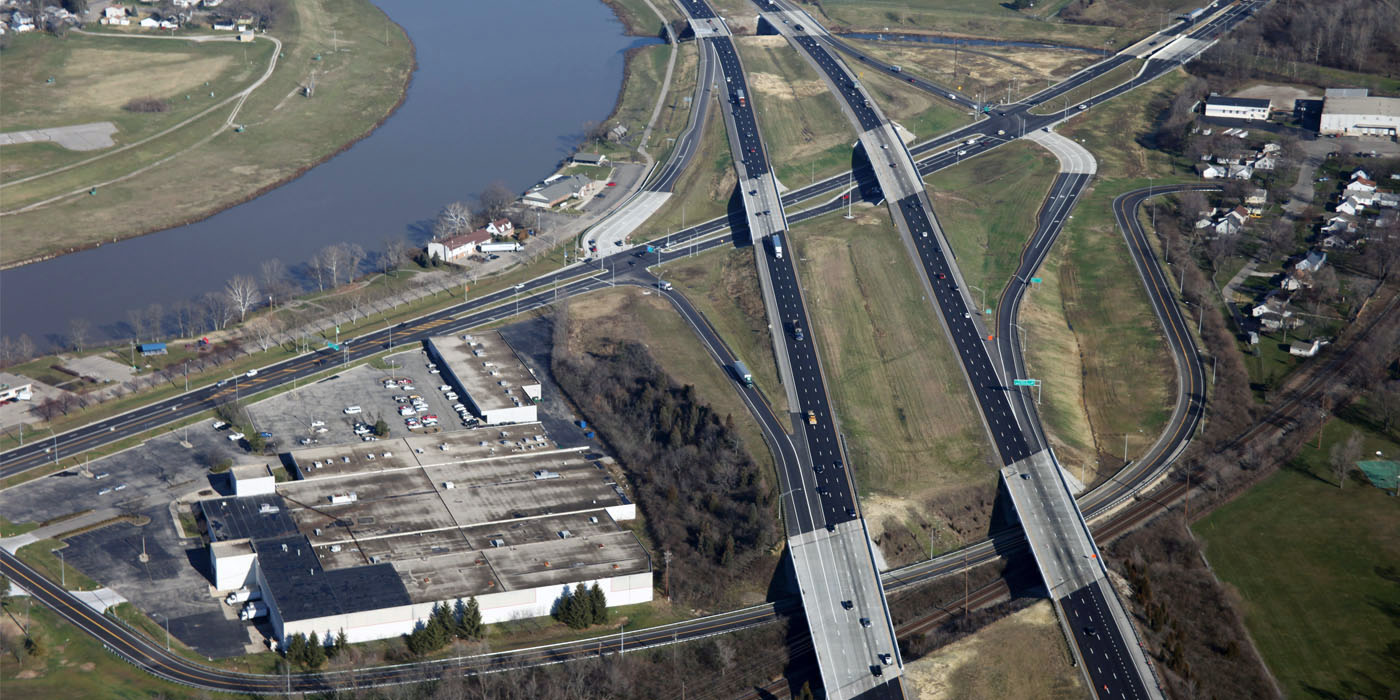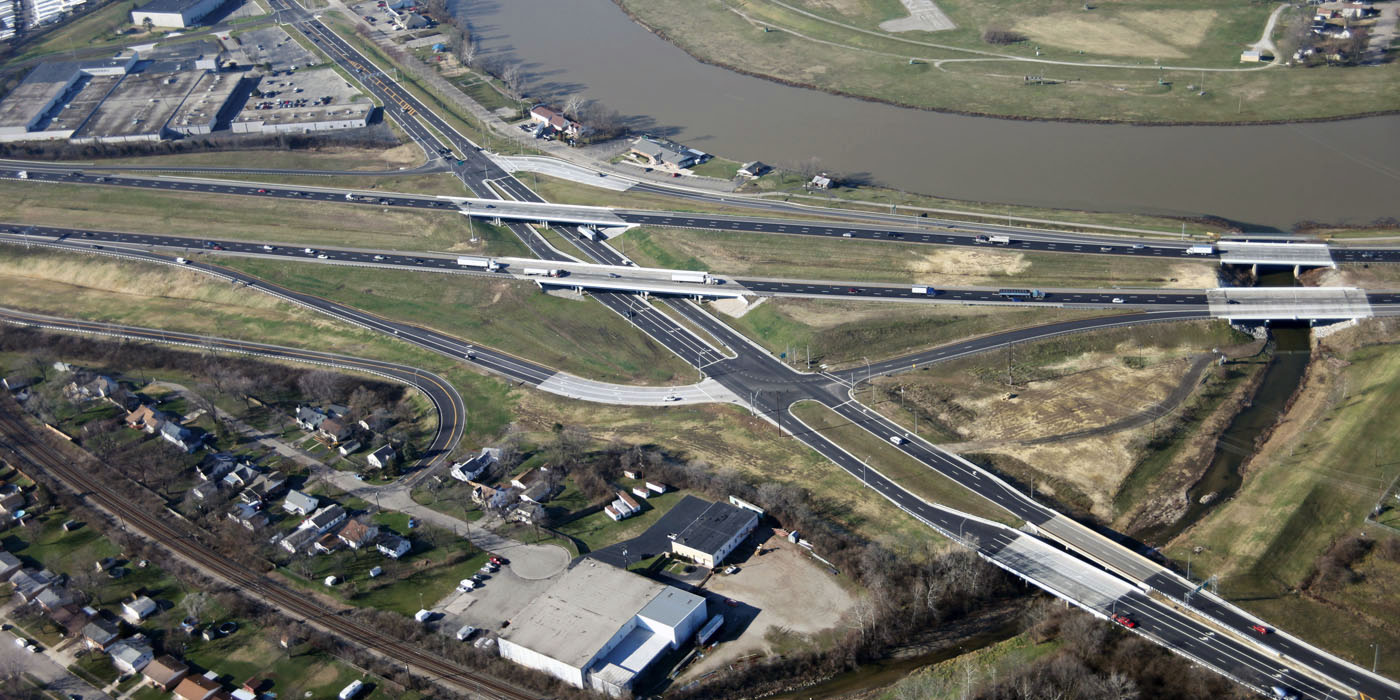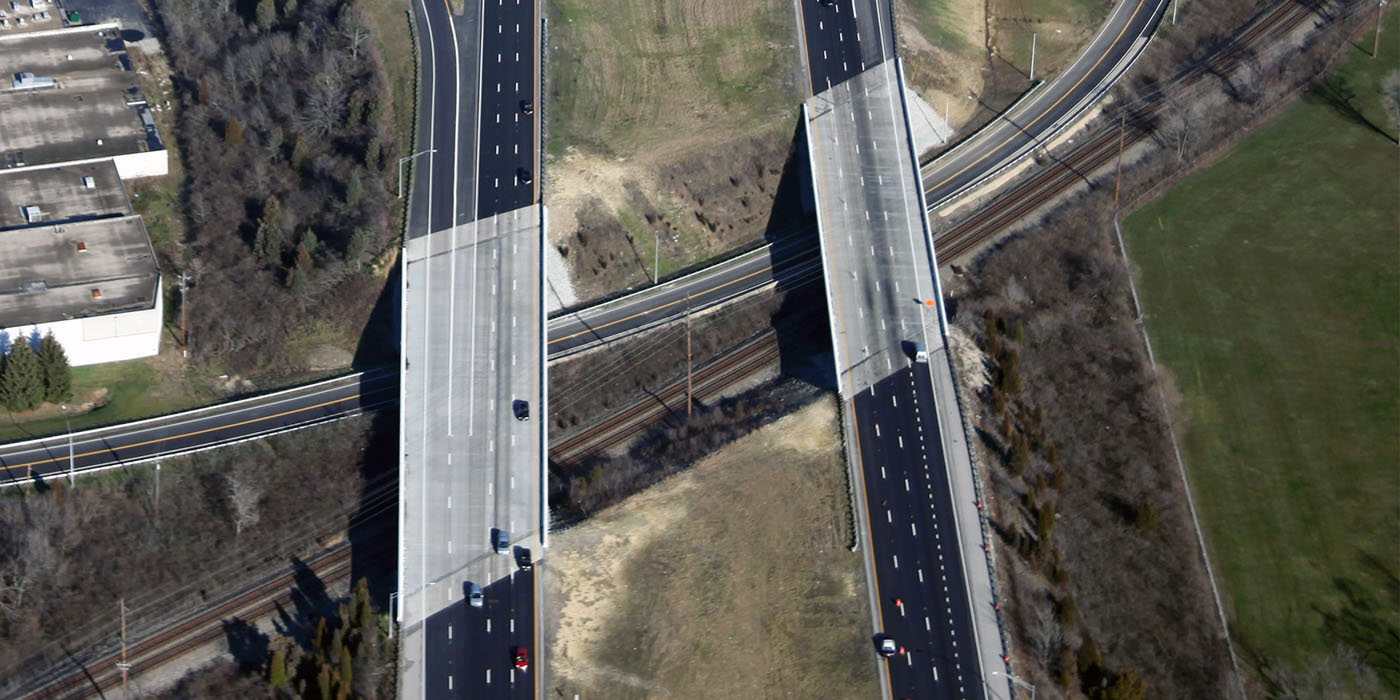Challenge
A project 50 years in the making, the I-75 Dixie Drive Interchange was in need of reconfiguration to improve traffic flow.
Services Involved
- Environmental Documentation
- Hydraulic Modeling
- Noise Analysis
- Highway Design
- Bridge Design
- Traffic
- Survey
I-75 Dixie Drive Interchange
Interstate 75 is one of the busiest transportation corridors in the United States, helping move more than $4 billion in goods throughout Ohio annually. Constructed in the 1950s as a connector between Cincinnati and Dayton, the roadway originally ended in Dayton at the juncture of Dixie Drive and Central Avenue, on the southern side of the metropolitan area. The highway was eventually extended north through Dayton in the 1960s (and now connects northern Michigan to southern Florida), but the interchange was never reconfigured as it should have been.
ms consultants was retained by the Ohio Department of Transportation to supply environmental documentation and design services to complete the existing Dixie Drive and Central Avenue interchange with I-75.
In addition to providing access and egress in both directions, the ms team addressed the efficiency of the existing arterials with the intention of reducing the overall footprint of the interchange. Eastbound and westbound traffic had been separated, with the former running on Dixie Drive and the latter on Central Avenue. Through realignment and restructuring of the interchange, ms transformed circuitous routes into straightforward travel patterns allowing easy access to and from the interstate and the adjacent businesses, reducing congestion, and enhancing safety.
Now that the project is complete, three twin bridges carrying I-75 over Dixie Drive/Central Avenue, Holes Creek, and an active railroad line have been replaced, rehabilitated or widened.
Dryden Road, which runs parallel to I-75 and connects to Dixie and Central, has also been widened with the intersection being signalized.
Located adjacent to the confluence of the Great Miami River and Holes Creek, the project site contains both ancient and more recent historical features. A large prehistoric earthwork, known as the Alexanderville Works, is situated within the project limits. ms worked with cultural resources subconsultant, Hardlines Design Company, to conduct archaeological investigations to ensure that proposed modifications did not encroach on currently undisturbed areas.
In the early 1900s, Orville and Wilbur Wright performed initial experiments on a “water plane” design along this section of the Great Miami River. Through the 1930s, 40s, and 50s, the river was used as a seaplane refueling location for flights between the Great Lakes and the Gulf of Mexico. These activities led to the development of the Moraine Airpark on the western riverbank.
While the project does not directly impact the airpark, special features have been introduced into the interchange lighting plan to maintain safe landing and take-off zones for aircraft. The river is important to today’s residents as well, serving as a recreational location complete with a bicycle path along the east bank of the river both north and south of the project. As ramps are added and relocated, connectivity for bicyclists through the area will be strictly maintained.
Now that the interchange is completed, the city of West Carrollton is planning to move forward with a $70 million dollar entertainment district to be called Miami Bend. A waterpark is included in the master plan, and ties that portion of the waterfront into a larger corridor plan envisioned for the river stretching from Sidney (north of Dayton) to Hamilton (just north of Cincinnati).
The interchange is also crucial to the area’s economic and industrial redevelopment, according to various city and business leaders.
Chris Kershner, the Dayton Area Chamber of Commerce’s vice president for public policy and economic development, told the Middletown Journal that the project “is critical to the redevelopment and reindustrialization of the surrounding area.” He helped West Carrollton lobby for funding to make the project possible. Of the more than $26 million total project cost, $5 million was provided at the federal level.
The successful completion of this project serves as an example of engineering in action — resolving transportation, environmental, historical and economic elements through efficient, integrated design.



